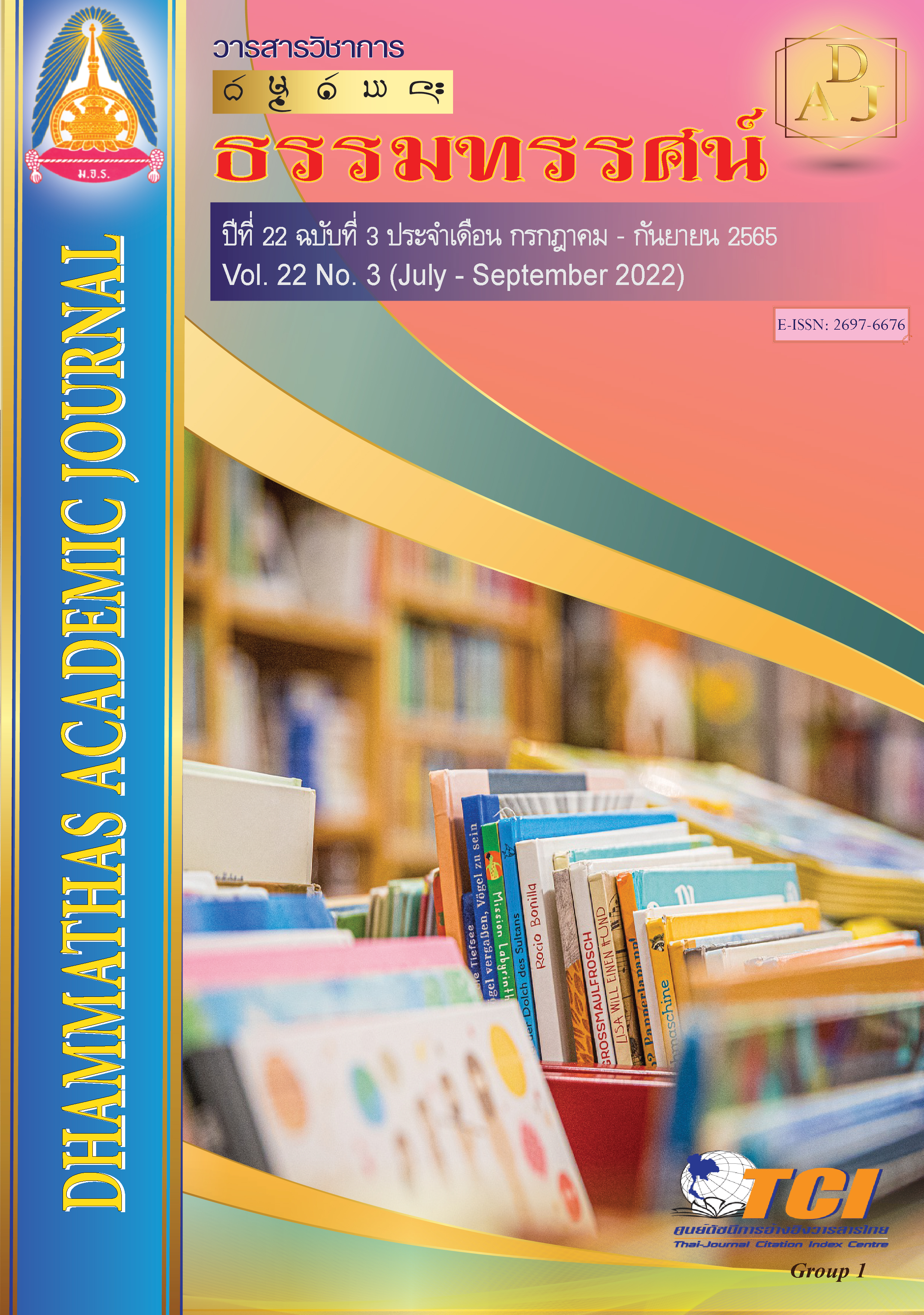The Model of Educational Administration According to the Buddhist Principles of Integration in the Situation Education Outbreaks of Covid-19 under the Office of the Secondary Educational Service Area
Main Article Content
Abstract
The objectives of this research were: 1) to study the condition of education administration in the situation of the COVID-19 outbreak, 2) to develop a model of
educational administration according to Buddhist integrated principles, and 3) to propose a model of educational administration according to Buddhist integrated principles in the situation of the COVID-19 outbreak. It was a mixed-method research, comprising a quantitative research using a sample of 361 people, statistics using percentage, mean, standard deviation. As for the qualitative research, interviews were conducted with 10 qualified persons and group discussions of 10 persons were used, analyze data by content analysis.
The results of the research found that:
1. Administrators and teachers are of the opinion that the current state of education administration in the situation of the COVID-19 outbreak In terms of safety from reducing the spread of germs at the highest level, followed by financial management, policy, coverage of disadvantaged children, learning, and welfare and protection, respectively.
2. Develop a model from interviews with administrators and teachers, and a group discussion of experts has a model of education administration according to Buddhist integrated principles in the situation of the Covid-19 outbreak.
3. Propose a model of education administration based on Buddhist integrated principles in the situation of the COVID-19 outbreak. It consists of 4 parts: part 1, the leading part, which is environment, principles, and objectives; part 2, the model is the prevention of the spread of COVID-19 in 6 aspects: 1) safety from reducing the spread of disease, 2) aspects Learning, 3) Coverage for disadvantaged children, 4) Welfare and protection 5) Policy 6) Financial management integrated with Dharma Principles 4; part 3, Application 1) The structure is the scope of academic administration, budget, human resources and general administration, 2) Decision to act in the situation of COVID-19, 3) Assessment guidelines; and part 4, conditions of success depending on the context of the school.
Article Details

This work is licensed under a Creative Commons Attribution-NonCommercial-NoDerivatives 4.0 International License.
เพื่อให้เป็นไปตามกฎหมายลิขสิทธิ์ ผู้นิพนธ์ทุกท่านต้องลงลายมือชื่อในแบบฟอร์มใบมอบลิขสิทธิ์บทความ ให้แก่วารสารฯ พร้อมกับบทความต้นฉบับที่ได้แก้ไขครั้งสุดท้าย นอกจากนี้ ผู้นิพนธ์ทุกท่านต้องยืนยันว่าบทความ ต้นฉบับที่ส่งมาตีพิมพ์นั้น ได้ส่งมาตีพิมพ์เฉพาะในวารสาร วิชาการธรรม ทรรศน์ เพียงแห่งเดียวเท่านั้น หากมีการใช้ ภาพหรือตารางของผู้นิพนธ์อื่นที่ปรากฏในสิ่งตีพิมพ์อื่นมาแล้ว ผู้นิพนธ์ต้องขออนุญาตเจ้าของลิขสิทธิ์ก่อน พร้อมทั้ง แสดงหนังสือที่ได้รับการยินยอมต่อบรรณาธิการ ก่อนที่บทความจะได้รับการตีพิมพ์References
กรมอนามัย กระทรวงสาธารณสุข. (2563). คู่มือการปฏิบัติสำหรับสถานศึกษา ในการป้องกันการแพร่ระบาดของโรคโควิด-19. นนทบุรี: คิว แอดเวอร์ไทซิ่ง.
ดำรง ตุ้มทอง และคณะ. (2557). ปัญหาเด็กด้อยโอกาสทางการศึกษา: สถานการณ์ความไม่เสมอภาคในสังคมไทย. วารสารวิชาการคณะมนุษยศาสตร์และสังคมศาสตร์ มหาวิทยาลัยสงขลานครินทร์ วิทยาเขตปัตตานี, 10(1), 123-141.
เพียงเพ็ญ จิรชัย. (2550). การพัฒนารูปแบบการจัดโครงสร้างองค์กรตามแนวการกระจายอำนาจของสถานศึกษาขั้นพื้นฐาน สังกัดสำนักงานคณะกรรมการการศึกษาขั้นพื้นฐาน. (วิทยานิพนธ์ครุศาสตรดุษฎีบัณฑิต). กรุงเทพฯ: จุฬาลงกรณ์มหาวิทยาลัย.
วิทัศน์ ฝักเจริญผล และคณะ. (2563). ความพร้อมในการจัดการเรียนการสอนออนไลน์ภายใต้สถานการณ์ระบาดไวรัส Covid-19. วารสารศาสตร์การศึกษาและการพัฒนามนุษย์, 4(1), 44-61.
สำนักคณะกรรมการการศึกษาแห่งชาติ. (2562). พระราชบัญญัติการศึกษาแห่งชาติ พ.ศ. 2542. กรุงเทพฯ: พริกหวานกราฟฟิก.
Melnick, H. & Darling-Hammond, L. (2020). Reopening Schools in the Context of COVID-19: Health and Safety Guidelines From Other Countries. Policy Brief. Learning policy institute.

